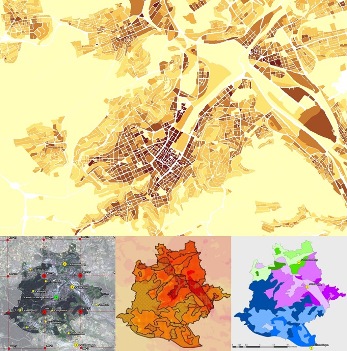


 World's most of harmful gas emissions and waste in cities is caused by building. Therefore, a transformation of existing buildings in a climate-friendly sense, as well as a future climate-friendly and energy-efficient planning and implementation of buildings and cities is essential to counteract climate change. Already taking place climate change represents a new global boundary condition for building that so far are not yet incorporated into the usual energy-related calculations for buildings. Vice versa, the cumulative impact of individual buildings is hardly considered by gas emissions and waste heat on global climate.
World's most of harmful gas emissions and waste in cities is caused by building. Therefore, a transformation of existing buildings in a climate-friendly sense, as well as a future climate-friendly and energy-efficient planning and implementation of buildings and cities is essential to counteract climate change. Already taking place climate change represents a new global boundary condition for building that so far are not yet incorporated into the usual energy-related calculations for buildings. Vice versa, the cumulative impact of individual buildings is hardly considered by gas emissions and waste heat on global climate.
A key reason is the lack of quantitative and presented in an appropriate form information on these phenomena. This deficit may be lifted only if intensive research is carried out on the interactions of global climate, urban climate and building climate.
The KLISGEE project is intended to make a contribution. This project aims to investigate the energetic consequences of climate change on cities and metropolitan areas, and is based on the linking of levels of Global Climate, Urban Climate and building in terms of capturing the energy efficiency of urban buildings. The interior of urban building and its immediate surroundings are here the object under examination, while the city climate change represents a boundary condition to be observed. The summer problem of "heat" is a focal point in the consideration of the energetics of the city air in the outer areas (radiation, turbulent heat fluxes, building heat, bottom heat, anthropogenic heat released) will form because the urban open spaces are increasingly being used in the summer as lounges. The contrast is investigated; (overheating in the cooling season, cold stress during the heating season), as these spaces are used all year round to live and work for interiors of both the winter and the summer heat protection in the context of climate change and urban climate. This potential scheduling conflicts can be considered in particular, such as the opposite effect of the high density of development on open spaces (desired shading in summer) and interiors (prevention of solar gains in winter), or even the possible negative side effects on the interior of useful vegetation free spaces, etc
The Stuttgart location will serve as a study area. Methodically, the thermal and energetic interactions between exterior and interior spaces are investigated by means of several numerical models. This approach represents a methodological innovation, as models from different levels of scale in terms of climate and energy are combined. These scales linkage enables a holistic view of related processes (energy balance in the urban canopy layer and the energy balance in the interior through joint system faces), which were not or only to a very limited so far linked.
Period: 07.12.2011 - 30.09.2014
Contact person: J.-Prof. Dr. rer. nat. Fazia Ali-Toudert
This project is supported by the Baden-Württemberg Region
Ministry of Environment, Climate and Energy (UM)
Link: http://www.lubw.baden-wuerttemberg.de/servlet/is/69998/